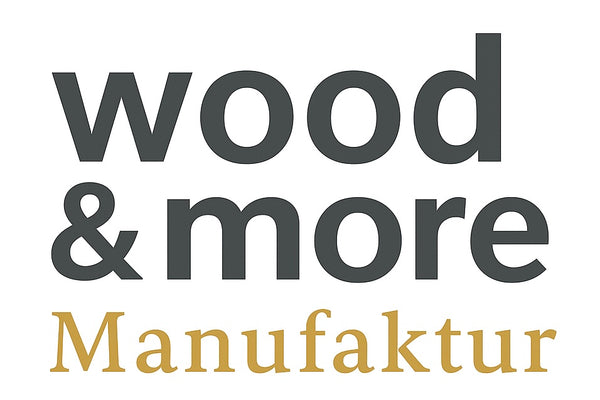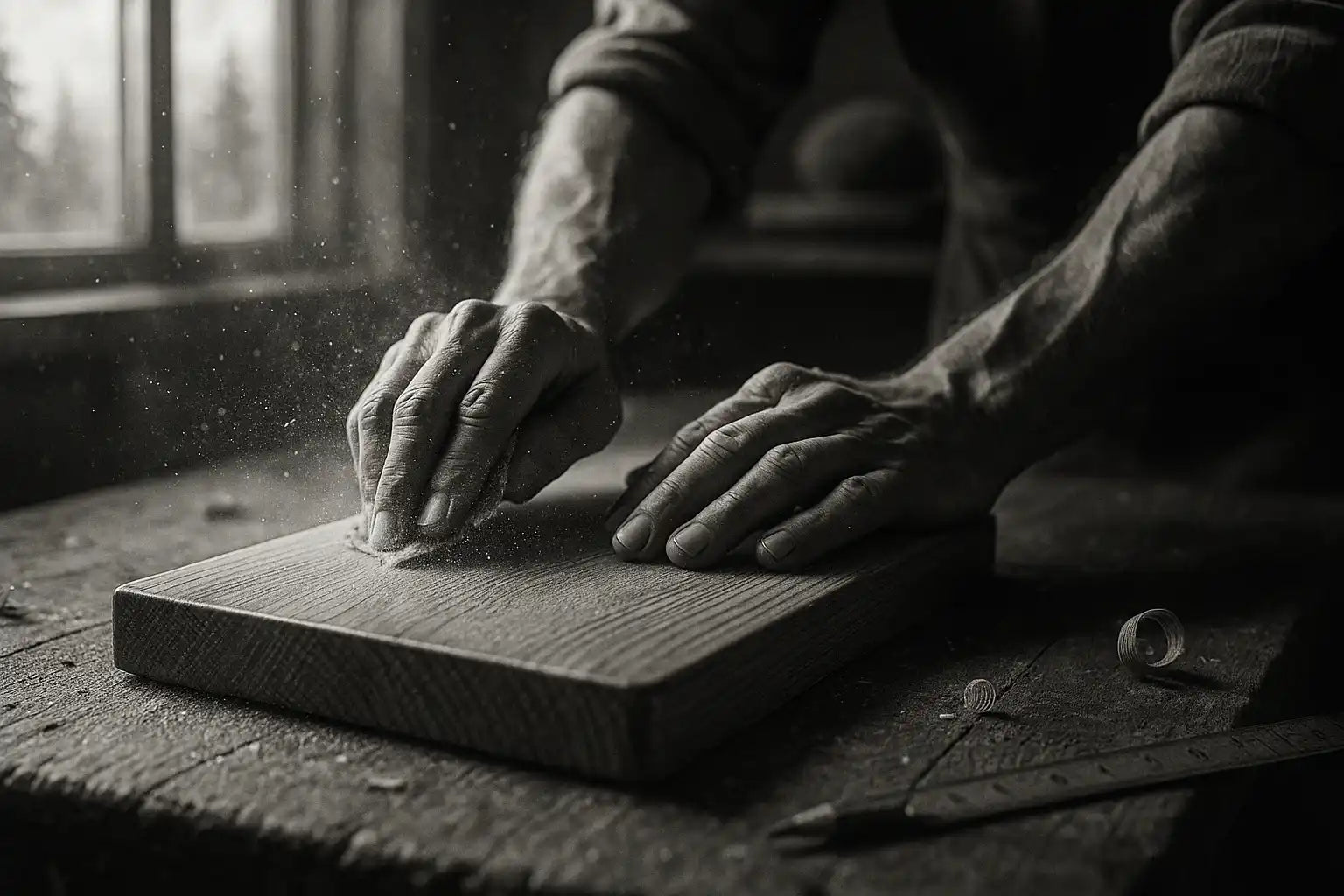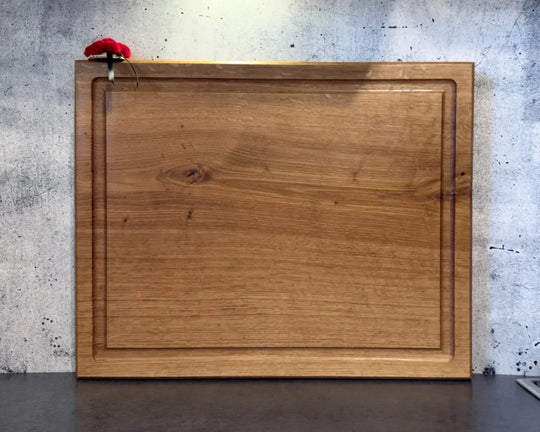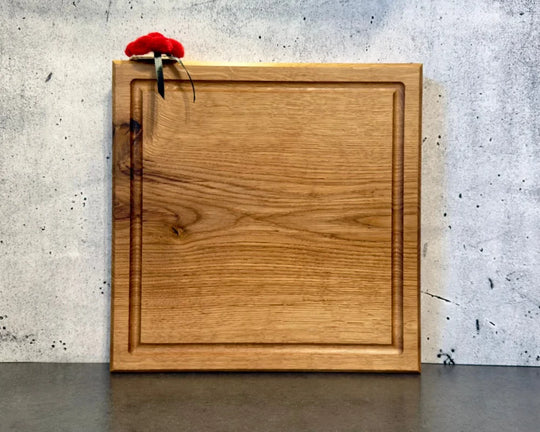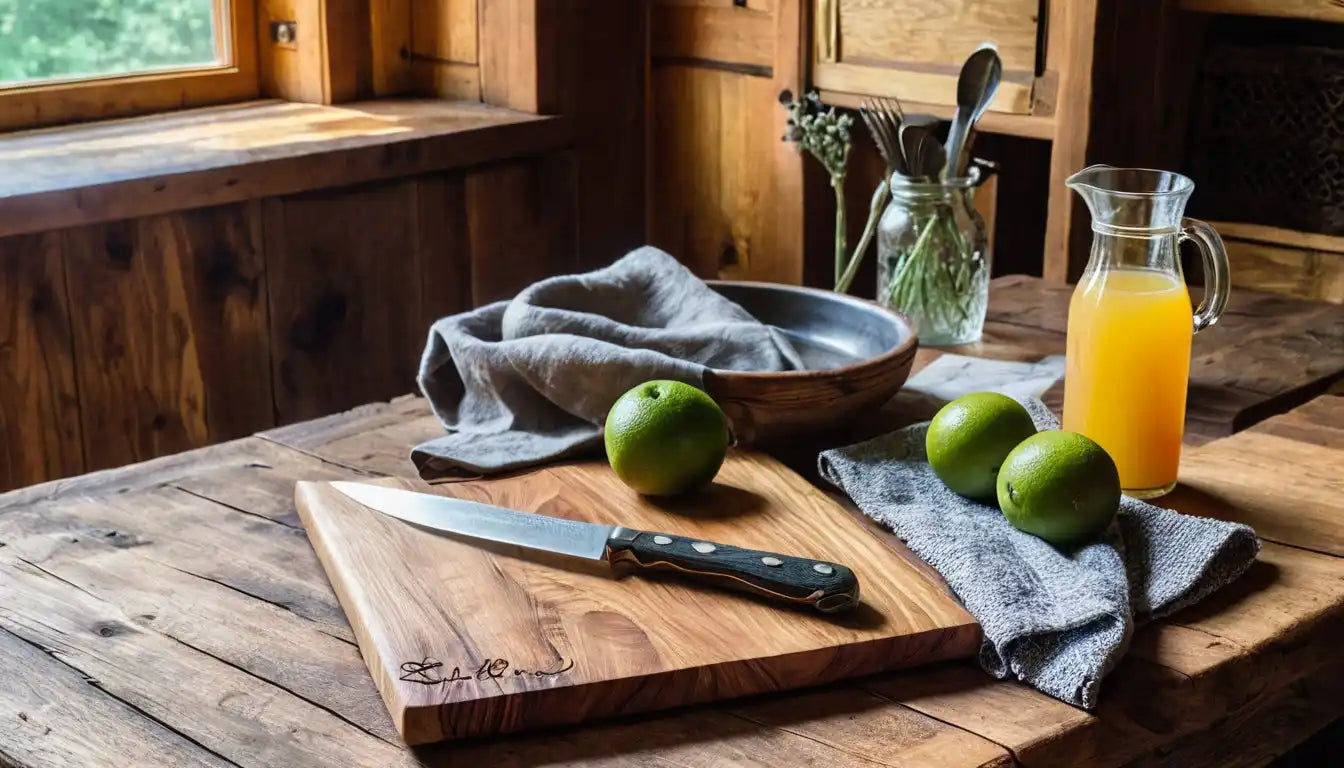Kurzfassung: „Massivholz“ ist ein Materialbegriff (Holz durch und durch, nicht furniert) – es kann aus einem Stück oder aus verleimten Lamellen bestehen. „Vollholz“ verwenden wir hier bewusst als Klartext für: aus einem einzigen Stück ohne Verleimung. Beides kann hervorragend sein – Qualität entscheidet sich an Holzvorbereitung, Trocknung, Konstruktion und Pflege, nicht am Marketingwort allein.
1) Begriffe sauber trennen
Massivholz bedeutet: Holz „durch und durch“, nicht furniert. Das schließt Bauteile ein, die aus mehreren Vollholz-Lamellen fugenverleimt sind (Massivholzplatten). Massivholz sagt nicht automatisch, dass ein Bauteil aus einem einzigen Stück gesägt ist.
Vollholz (hier im Sinn von: „aus einem Stück“) nutzen wir in diesem Beitrag als eindeutige Bezeichnung für Boards aus einem einzigen, unverleimten Stück Stammholz. Das ist alltagssprachlich geläufig, aber nicht normverbindlich – wichtig ist die klare Produktbeschreibung in Titel und Details.
Wichtig: In der Praxis bedeutet „Massivholz“ in deutlich über 90 % der Fälle nicht automatisch „ein Stück“, sondern häufig „lamellenverleimt“ – technisch solide und weit verbreitet.
2) Mythos Verzug: Ein Stück = unverziehbar?
Mythos: „Ein Brett aus einem Stück verzieht sich nicht.“
Fakt: Holz arbeitet immer. Es quillt und schwindet je nach Luftfeuchte; tangentiale Schwindung ist größer als radiale. Daher kann sich jedes Brett – ob einteilig oder lamellenverleimt – verziehen, wenn Trocknung, Lagerung, Einsatzklima oder Pflege nicht passen. Gute Produktion plus passende Pflege minimieren das Risiko stark, eliminieren es aber nie.
3) Vollholzbrett vs. Massivholzplatte – der Vergleich
| Kriterium | Vollholzbrett (ein Stück) | Massivholzplatte (lamellenverleimt) |
|---|---|---|
| Optik | Durchgängiges Maserbild, „gewachsene“ Anmutung, markante Jahresringe | Homogene Fläche; je nach Aufbau (durchgehende vs. keilgezinkte Lamellen) variiert die Zeichnung |
| Holzbewegung | Reagiert anisotrop auf Feuchte; Breite und Jahrringlage entscheidend | Lamellenmix kann interne Spannungen reduzieren; konstruktiv gut beherrschbar |
| Breitenverfügbarkeit | Breite >30–40 cm in einem Stück erfordert selektiertes Material & sorgfältige Trocknung | Große Formate reproduzierbar; technisch etablierter Standard |
| Nachhaltigkeit/Ressourceneinsatz | Höherer Ausschuss bei sehr breiten, fehlerarmen Bohlen | Sehr gute Holzausnutzung durch Lamellen – ressourcenschonend |
| Preis/Verfügbarkeit | Seltener, aufwändiger, entsprechend teurer | Planbarer & meist günstiger bei gleicher Größe |
| Fairness der Deklaration | Transparent: „aus einem Stück“ explizit angeben | Klartext: „lamellenverleimt / durchgehende oder keilgezinkte Lamellen“ angeben |
Hinweis: „Keilgezinkt“ beschreibt die Längsverbindung von Lamellen über keilförmige Zinken – technisch bewährt, wenn fachgerecht ausgeführt.
4) Herstellung: Einschnitt, Trocknung, Lamellen & Keilzinken
Vollholz aus einem Stück erfordert breit gewachsene, gut getrocknete Bohlen. Die Trocknung (typisch ~8–12 % Holzfeuchte für Innen) und die Jahrringorientierung sind entscheidend, damit das Brett im Nutzklima ruhig bleibt.
Massivholzplatten bestehen aus Vollholzlamellen, die flächig (ein- oder mehrlagig) verleimt werden. Je nach Wunsch kommen durchgehende oder keilgezinkte Lamellen zum Einsatz; so entstehen große, formstabile Formate mit guter Materialeffizienz.
5) Klebstoffe & Lebensmitteltauglichkeit
Für Schneidebretter werden üblicherweise Holzleime nach DIN EN 204 in den Klassen D3/D4 (feuchtebeständig bis wasserfest) oder geeignete PU/EPI-Systeme eingesetzt. Qualität erkennst du an fachgerechter Verleimung und klaren Herstellerangaben zur Eignung im Küchenbereich. Wichtig: ausgehärtete Klebstofffugen sind bei seriöser Produktauswahl und richtiger Verarbeitung unkritisch – im Alltag trifft das Messer Holz, nicht „harten Leim“.
6) Preislogik & Fairness
- Materialselektion: Breite, fehlerarme Bohlen für Vollholz-Einzelstücke sind selten – Selektion & Ausschuss treiben den Preis.
- Trocknung & Lagerung: Lange, kontrollierte Trocknung bindet Kapital – sorgt später für Stabilität.
- Manufakturarbeit: Planen, Fräsen, Saftrille, Griffmulden, Kanten, fein schleifen, ölen – viel Handarbeit.
- Massivholzplatte: Effiziente Holznutzung, verlässliche Formate – fair, wenn klar als „lamellenverleimt“ deklariert.
7) Checkliste: So erkennst du echte Qualität
- Produkttitel/Details: Steht explizit „aus einem Stück“ oder „lamellenverleimt (durchgehende/keilgezinkte Lamellen)“?
- Holzbild: Durchlaufende Jahresringe ohne Fugen = ein Stück; regelmäßige Fugen = lamellenverleimt.
- Trocknung: Angabe für Innenbereich (~8–12 % Zielholzfeuchte) und sorgsame Lagerung.
- Oberfläche/Öl: Lebensmitteltaugliche Öle, gleichmäßige Sättigung, keine klebrigen Stellen.
- Planheit: Brett liegt stabil; Gleitfüße optional.
- Transparenz: Der Hersteller erklärt offen Material, Aufbau und Pflege.
8) Praxis: Pflege, damit Bretter lange plan bleiben
- Klima: Nach Nutzung abtrocknen lassen; stehende Nässe vermeiden; niemals in die Spülmaschine.
- Pflegeöl: Je nach Nutzung regelmäßig mit geeignetem Öl auffrischen.
- Lagerung: Möglichst beidseitig nutzen und mit Luftzirkulation lagern – Feuchtegradienten ausgleichen.
Merke: Holz reagiert auf Feuchteänderungen – gute Pflege steuert die Bewegung.
FAQ
Ist „Massivholz“ automatisch „aus einem Stück“?
Nein. Massivholz bezeichnet „Holz durch und durch“. Massivholzplatten bestehen aus verleimten Lamellen und sind trotzdem „massiv“ – nur eben nicht einteilig.
Verzieht sich ein Vollholzbrett weniger als eine Massivholzplatte?
Es kommt auf Trocknung, Jahrringlage, Nutzungsklima und Pflege an. Beides kann sehr stabil sein – oder arbeiten, wenn die Bedingungen schlecht sind.
Sind Klebstofffugen im Schneidebrett bedenklich?
Bei professioneller Auswahl und Verarbeitung (z. B. D3/D4 nach EN 204) nicht – die Fuge ist mechanisch sehr stark; im Gebrauch schneidest du ins Holz.
Was ist „keilgezinkt“?
Eine Längsverbindung von Vollholzlamellen über keilförmige Zinken – bewährte Technik, wenn fachgerecht ausgeführt.
